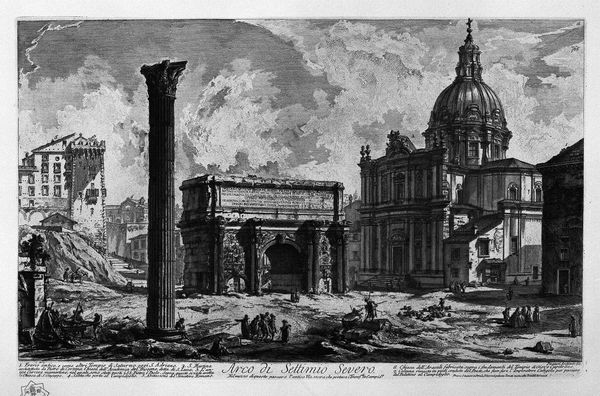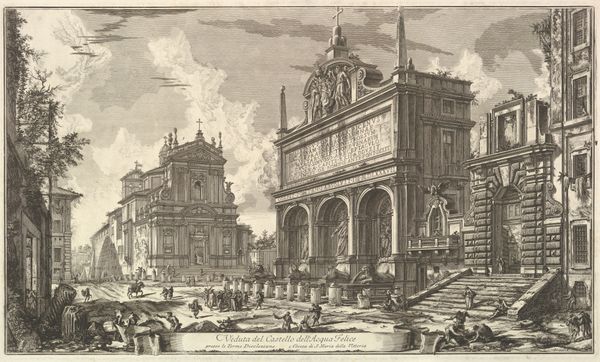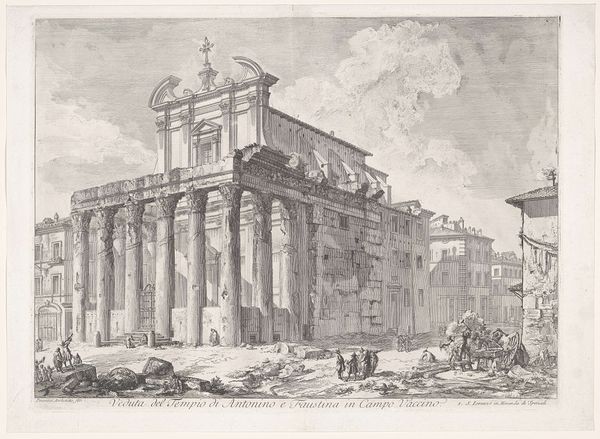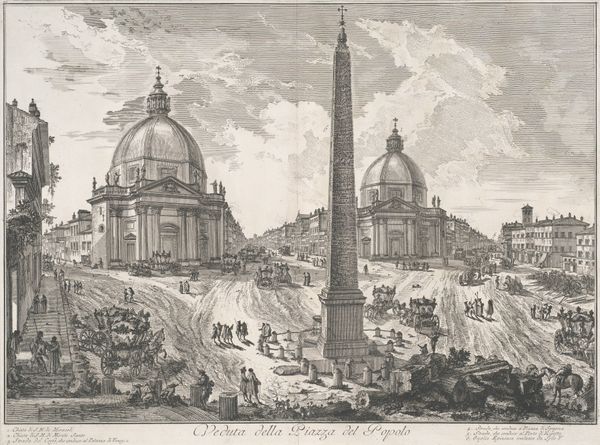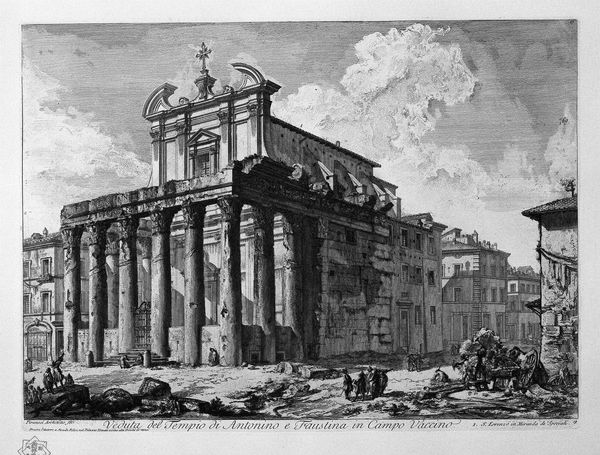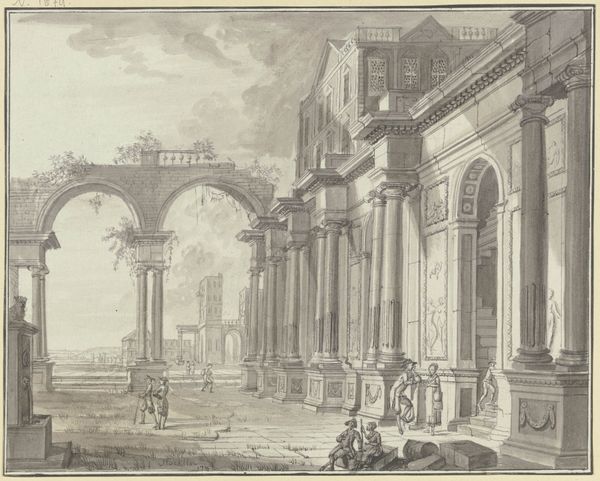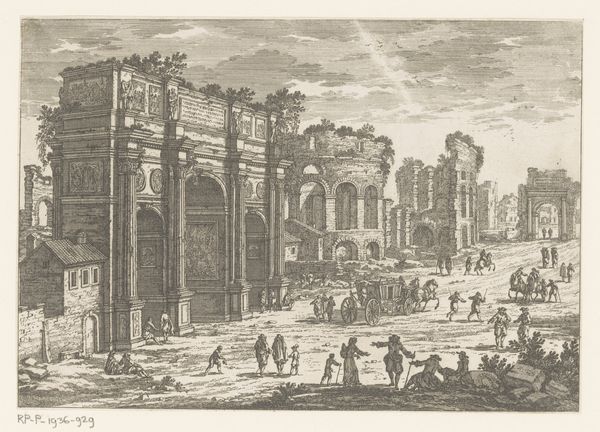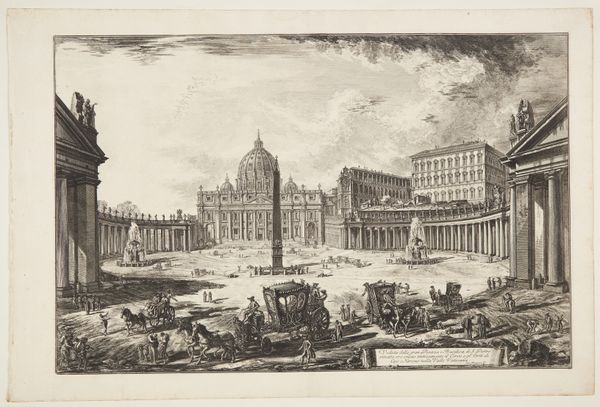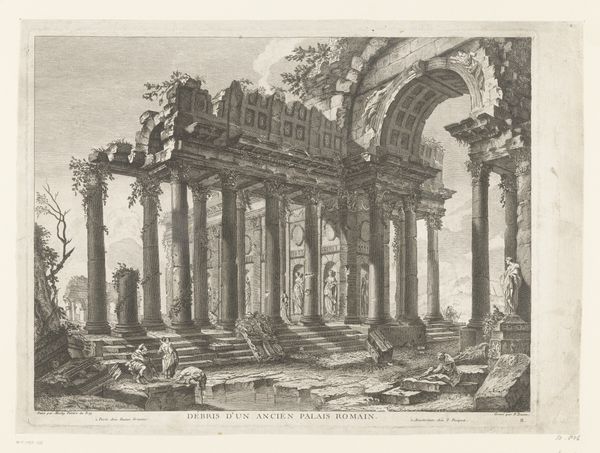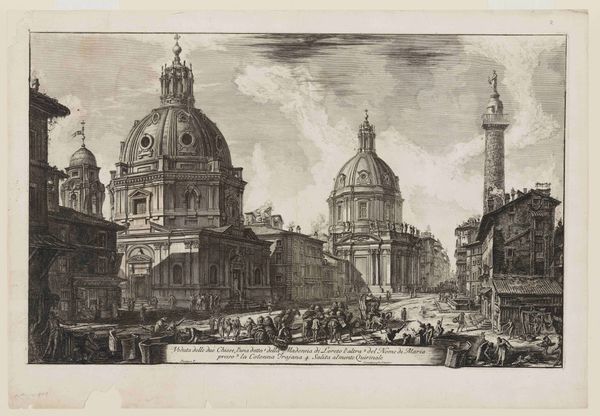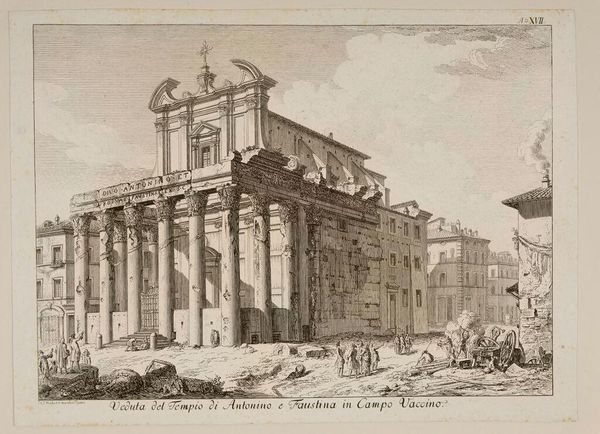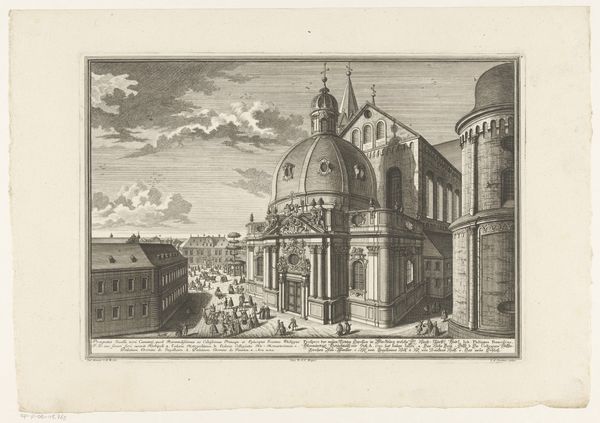
The Arch of Septimius Severus, with the Church of S. Martina on the right (Arco di Settimio Severo) 1754 - 1764
0:00
0:00
drawing, print, etching, engraving, architecture
#
drawing
#
baroque
# print
#
etching
#
column
#
arch
#
cityscape
#
engraving
#
architecture
#
building
Dimensions: plate: 14 5/8 x 22 5/8 in. (37.2 x 57.4 cm) sheet: 19 5/16 x 25 15/16 in. (49.1 x 65.9 cm)
Copyright: Public Domain
Giovanni Battista Piranesi etched this view of the Arch of Septimius Severus with the Church of S. Martina sometime before 1778. The arch, a symbol of Roman triumph and imperial power, looms large, adorned with intricate carvings that speak of military victories and divine sanction. Triumphal arches originated as temporary wooden structures for victorious generals, and the motif evolved into permanent stone monuments that were richly ornamented. This arch, built in 203 AD to honor Emperor Septimius Severus, served as a gateway, both physically and symbolically. This notion of transition and commemoration echoes in later architectural forms, such as city gates and memorial arches, which, like religious icons and symbols, are a testament to humanity's enduring need to mark significant passages. We can observe the enduring impact of classical forms like triumphal arches throughout history, each age imbuing them with new significance, illustrating how deeply rooted symbols can echo through our shared consciousness.
Comments
No comments
Be the first to comment and join the conversation on the ultimate creative platform.
